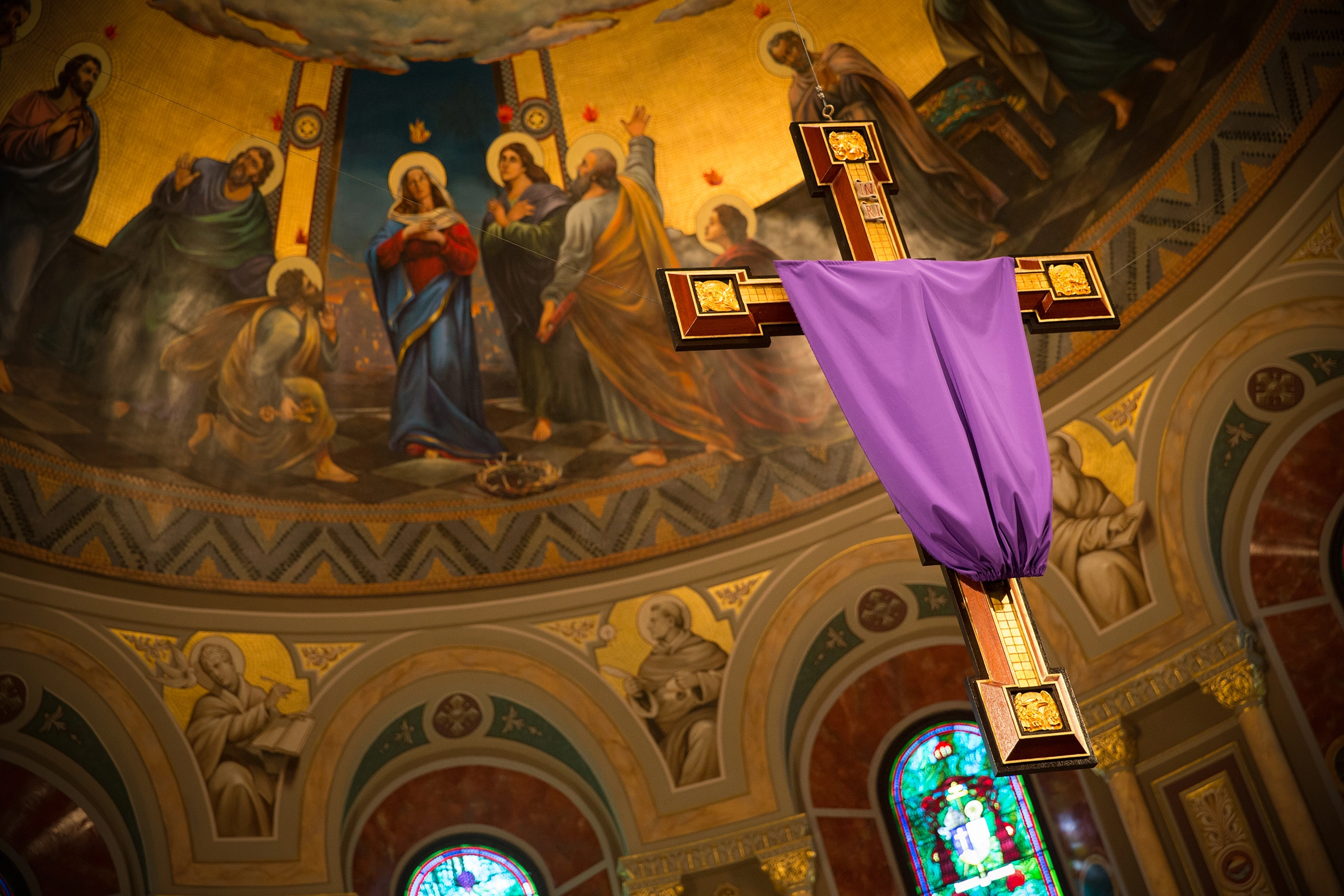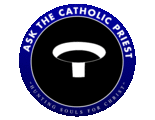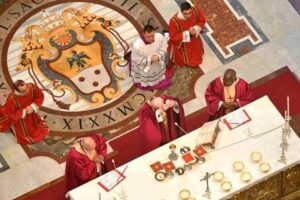Why the catholic church covers crosses and images during lent

WHY THE CATHOLIC CHURCH COVERS CROSSES AND IMAGES DURING LENT
Traditionally, the veiling of the crucifix, crosses and images of saints inside the Church begins on the 5th Sunday of Lent, sometimes, also called Passiontide or Lazarus Sunday. This tradition is biblically tied to the Gospel for the 5th Sunday of Lent, Year A (John 11:1–44) when we read Jesus’ raising of Lazarus of Bethany from the dead four days after his entombment. The Gospel reads: “The dead man came out, his hands and feet wrapped with strips of linen, and a cloth around his face” (John 11:44). Thus, Lazarus came out of his tomb still bounded (veiled).
Theologically, the practice of veiling of crosses has a another profound meaning. The early Christians understood the image of Jesus on the cross as a sign of his glory: “And I, when I am lifted up from the earth, will draw all people to myself” (John 12:32). Thus, the crucifix was interpreted as the throne from where Jesus the King of Glory reigned; it was never understood as a sad moment. This explains why till today, the Eastern Orthodox Churches, use the inscription “Rex Gloriae” (King of Glory), instead of the usual “INRI” inscription fixed to our crucifixes. Again, it is for this reason that we find the crucifix displayed in every Catholic Church; we are welcomed into the Church with the opened arms of the King seated upon his throne. Indeed, a happy moment.
So, starting from the two weeks leading up to Good Friday, in the period called Passiontide, crosses and images of saints, which are seen as images of glory, are removed or veiled (covered), as it were, so that we can begin to contemplate on the sad events leading up to the Passion and Crucifixion of Christ. We have been fasting from food and meat all along our Lenten journey, now, Mother Church invites us to observe another kind of fasting i.e., “fasting of the eyes”. In another sense, this fulfils what Jesus said when once asked why his disciples did not fast: “But the time will come when the bridegroom will be taken from them; in those days they will fast” (Luke 5:35). The veiling of the crucifix, crosses and images of saints inside the church is another form of fasting for us his disciples because the Bridegroom is taken away (veiled) from us.
In this tradition we see the beauty and deep theological and spiritual significance behind the outward signs of our Catholic faith. The more we understand these practices, signs and symbols, the better we come to appreciate our worship.
PS: Since the Reform of the Liturgy in the early 1970s, following the Second Vatican Council, the veiling/covering of crosses and holy images inside the church are now obligatory only during the Easter Triduum (after the Mass of the Lord’s Supper on Holy Thursday till the time before the commencement of the Easter Vigil celebrations). The veiling of crosses starting from the 5th Sunday of Lent is still permitted but now it’s a decision left to the individual Bishops.
By: Fr. Anthony Agnes Adu-Mensah.
(Rome, 26th March 2023)
Tag:Cross




